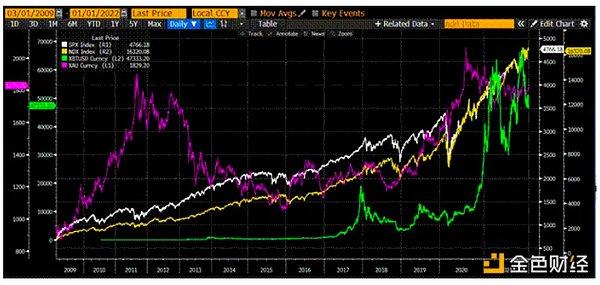This year marks the tenth anniversary of Ethereum, which has supported the prosperity of DeFi and triggered the Non-Fungible Token wave over the past decade. Numerous developers and idealists have converged, collided, and built on this chain, writing one crypto narrative after another.
However, at this tenth year, Ethereum has reached a crossroads of fate. New public chains are emerging endlessly, narrative dominance is frequently shifting, and prices have lost momentum in a prolonged adjustment.
After ten years of baptism, can Ethereum usher in a massive pump?
[The rest of the translation follows the same approach, maintaining the structure and translating the text while preserving any HTML tags and specific terminology as instructed.]
Does this mean traditional institutions are actively engaging with the Ethereum ecosystem, beginning to experiment around its security, transparency, and composability? Crypto KOL Blue Fox also proposed a forward-looking concept: Will large financial institutions build their own Layer 2 or private chain on Ethereum's security layer in the future?
The perspective of LXDAO founder brucexu.eth might provide some insights. He stated that many Hong Kong financial institutions and asset-on-chain projects he recently contacted generally choose Ethereum as the underlying platform because, at the current stage, it is almost the only preferred option. He pointed out:
"From a functional perspective, Bitcoin lacks flexible extensibility; from stability and neutrality, financial institutions cannot accept public chains that might be subject to state intervention or face downtime risks; while emerging blockchains have yet to be tested by time and security, their maturity still needs verification."
These early actions might just be a prelude. But in the short term, whether Ethereum can realize value realization is crucial, and the explosion of the application layer is very important.
Awaiting Thousands of Chains, or a Fading Hero?
From the Ethereum Foundation's core team replacement in February this year to the recent proposal supporting the RISC-V virtual machine, Ethereum is showing an attitude of "active correction". Ethereum Foundation Executive Director Tomasz K. Stańczak recently candidly admitted that Ethereum's "secondary goal" is to become the preferred infrastructure for institutions, winning markets like RWA and stablecoins.
These developments are not pessimistic, and even technically, a turning point is emerging. According to Trend Research's analysis, ETH is at a critical position of support and resistance interchange, and a breakthrough might bring a favorable trend reversal. ETH has experienced a long decline of 5 months from December 2024 to now, with profitable address numbers dropping to even lower bear market levels, continuously oversold. Currently, accompanying the crypto market's recovery, it has entered a critical support-resistance interchange interval.

Trend Research points out that multiple technical indicators are also releasing potential bottom-building signals. ETH's candlestick pattern, moving averages, MACD, Momentum, RSI, and MFI all point to the possibility of a short-term bullish-bearish turning point. The current price is also approaching the upper edge of the downward channel and horizontal pressure level, attempting to break through.
Ethereum seems to be approaching its "critical window period", but as the Chinese saying goes, "Before considering victory, consider defeat". Even if the situation shows a glimmer of hope, one cannot help but ask: What if it ultimately fails? If these efforts still cannot break through performance bottlenecks, ecosystem development stagnates, or price confidence cannot be regained, will Ethereum become the "doomsday chariot" of the new era?
Ten years is a node of time, and more a test of faith. As the wheels of history roll forward, success means thousands of chains look up, failure means a hero fades away.






